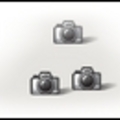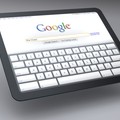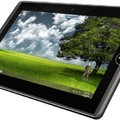Shared by eszpee
szép olcsó tárgyfotó-trükk!
I once saw a video, where a pro-photographer used professional studio lighting and mirrors to light a subject, and it inspired me to try and achieve the same result using only ‘amateur light’
After a visit to the DYI store and Toys R’Us, I had what I needed; 4 pieces of 15 x 15 cm (5,5 x 5,5 inches) mirrors and a model car. Call me a petrol-head, but I couldn’t help but worrying which car to buy based on what I’d most like to own full-scale… In the end I decided on a scale 1:24 Maserati GranTurismo

My ‘household light’ is an old 20 AUD IKEA floor lamp with a 60 watts tungsten bulb. I wanted to use only one light source, as household bulbs almost inevitably gives different color hues depending on manufacturer and age of the bulb.
My aim was to use the mirrors to reflect light onto the car, in order to make shape, form and curves more noticeable than if I had just flooded the whole car with light.
My first set-up was like this:

This lit the car from the side, at about 45 degrees above. The first shot using only the floor lamp and no mirrors produced this effect:

There’s a nice Z-shaped shadow across the hood, but otherwise it was clear that this set-up didn’t work. Take a look at the car - there aren’t any sign of curves or lines along the side of the car or around the wheel arches.
The light is too strong and too direct to show any tones in the reflected light. This creates an even surface lacking any depth perspective. A lot like the effect from direct sunlight at the middle of the day, actually.
More importantly, with the light coming from the same side of the car I had my camera positioned, I was unable to use the mirrors to reflect light onto the car. It had to be re-arranged!
My second set-up looks like this

Here I have the lamp directly behind the car, about 60 degrees above.
Here’s the beginning - car lit only with the lamp:

Not surprisingly, the car is underexposed on the side I’m photographing (which is what I want it to be at this stage). There a highlight (where door meets roof). I guess it could have been solved by using a more diffused light such as a white cloth in front of the lamp.
The first mirror I placed (marked 1 on the photo above) reflects light on the front of the car:

The aim is to light the front and more specifically, to get reflections in the headlight.
The next mirror (marked “2″) reflects light onto the side of the car:

and creates reflections in the wheels (particularly the front) and enhances the shape and form of the front wheel arch as well as the longitudinal crease on the door and down to the rear wheel arch.
The third mirror (yep, marked “3″)

is reflecting light onto the rear wheel and enhances the line from the roof onto the trunk.
The last mirror (no. “4″) is reflecting light onto the front and into the cabin.

Having used all four mirrors I was out of options, but I don’t think more mirrors would have made a difference anyway.
Here’s how the car looks without mirrored light and with mirrored light (click to enlarge):
With just a household lamp and four mirrors I have created a studio-like lighting of the model car!
Had my mission been to sell the model car on ebay or another internet auction site, I’m confident that the final result would have attracted more potential customers, and thus a higher selling price.
Even if I’m not selling the model car (I’ll sell it when I can replace it with one in scale 1:1), I have still had fun playing with light. Knowledge of light is the basics of photography, so it will undoubtedly benefit me at a later stage. And, who knows, I might even have inspired you to try something similar - playing and learning?
Tech-talk:
Photos are taken with a Nikon D300 and 50 f/1.8 lens. All photos are shot at f/14 and approx 1 second exposure at ISO 320. White balance was set to auto which created a yellow hue. I could have recorded a manual white balance, but as I shot in RAW I adjusted the white balance in Nikon Capture NX.
The photos are reduced in size, added some sharpness and converted to jpg. Otherwise no post processing.
Is there anything I would have differently?
I later noticed that the car looked cooler in the first set-up (seen more from the front). I’ll keep that in mind for next time. Also, next time I’ll consider a dark non-reflective surface and backdrop. That should give me more fine-tuning possibilities, as there will be much less reflected light from the tabletop. Furthermore it will allow the car to stand out more from the background.
Did I stop there?
Nah, I had to try to turn the mirrors around, like this:

A rather different way of using the mirrors, which creates this result:

This set-up is lit with a softbox, and note how form and curves are less distinct than when using the mirrors. It clearly shows the difference the mirrors can do when used for reflecting light.
I’d love comments and suggestions - or even challenges - regarding the next subject to light with household light and mirrors…








Utolsó kommentek